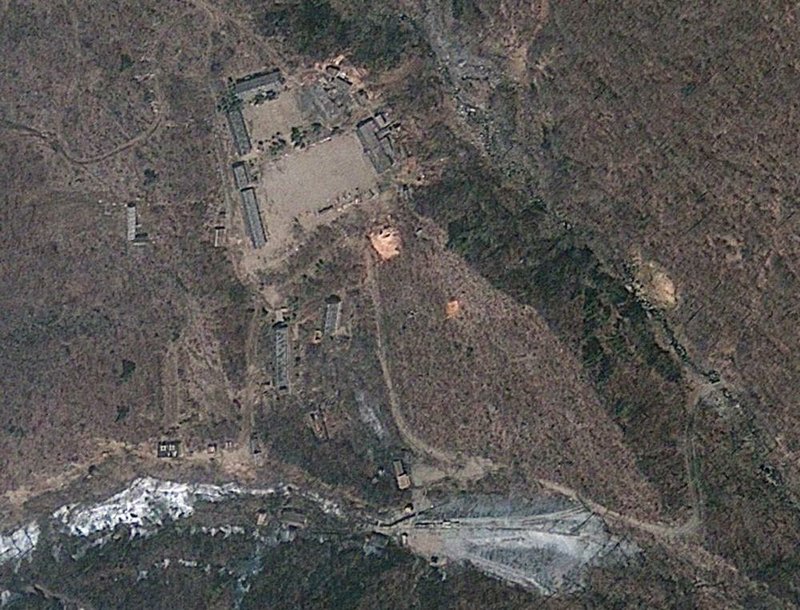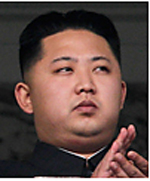JINDO, South Korea - With South Korea preoccupied by a ferry disaster, North Korea has increased activities at its main nuclear-test site, prompting Seoul and Washington to prepare for a possible nuclear test from the North, the South Korean Defense Ministry said Tuesday.
The report came as U.S. President Barack Obama was nearing the start of his trip later this week to Japan and South Korea, where he was expected to discuss with regional leaders how to deal with the North Korean nuclear threats.
“We have detected various types of activities at Punggye-ri,” a Defense Ministry spokesman, Kim Min-seok, said Tuesday, referring to the place in northeastern North Korea where the country has conducted three underground nuclear tests since 2006, the latest in February 2013.
Kim said the United States and South Korea had heightened their combined surveillance and intelligence-gathering efforts to prepare for a possible nuclear test from the North. The South Korean military activated a special crisis-management task force Monday morning, he said.
South Korea and international analysts recently have said satellite imagery showed continuing activities at the North’s nuclear test site, but they reported no signs that a test was imminent. The South Korean Defense Ministry had said a new nuclear test by North Korea was a “political” rather than technical decision, with its engineers ready to conduct one on relatively short notice from its leader, Kim Jong-un.
South Korean national news agency Yonhap quoted an anonymous government official as saying that the North had placed a large screen at the entrance of a tunnel in Punggye-ri, possibly to thwart Western spy satellites watching the site.
Similar activities were reported ahead of the test in February last year, but the North Korean regime also is known for staging such activities to draw international attention and force Washington and Seoul to engage it with dialogue and grant it concessions.
The official told Yonhap that vehicle activities also sharply increased in Punggye-ri, probably to take in equipment for communications and for recording seismic waves. But the final signs of an imminent test - such as sealing a tunnel with concrete or soil - were not detected, the official said.
“North Korea wants attention ahead of Obama’s visit,” said Lee Byong-chul, senior fellow at the Institute for Peace and Cooperation in Seoul.
Six-nation talks on ending North Korea’s nuclear weapons program collapsed in 2009. Recent efforts to revive them have stalled over differences between Washington and Pyongyang over what actions the North needs to take before such negotiations can resume.
Lee said another nuclear test by North Korea “would add fuel to the fire” among South Koreans who already were troubled by the ferry disaster.
In waters off Jindo Island near the southwestern corner of South Korea, divers were continuing their efforts to enter an overturned and submerged ferry to take out bodies. The ship tilted and sank last Wednesday with 476 people on board. Officials counted 174 survivors and at least 146 deaths by this morning. More than 150 remained missing.
Fears of a fourth nuclear test by the North have increased since late last month, when North Korea threatened to carry out a “new form” of nuclear test.
Washington and its allies have warned that another nuclear test by the North would prompt more international sanctions against the country. North Korea already is heavily sanctioned for its previous tests of nuclear devices and long-range missile technology.
After the test in February last year, relations on the divided Korean Peninsula plunged to their chilliest in years, with the North and the South trading threats of attack. The tensions eased in the second half of last year. But they rose again starting in February of this year, when the United States and South Korea conducted their annual joint military drills and North Korea test-launched a series of short- and middle-range missiles off its east coast.
North Korea is believed to have used some of its small stockpile of plutonium in its first two tests in 2006 and 2009. The North had produced plutonium from spent fuel from its nuclear reactor, which the North is believed to have recently restarted.
North Korea also is running a uranium-enrichment program, first unveiled in 2010, that officials and analysts in the region fear will provide the country with a steady supply of fuel for nuclear tests and bombs.
After the test last February, analysts could not determine whether the North used highly enriched uranium for fuel. They said that by the “new form of nuclear test,” North Korea may mean a test of a uranium bomb.
Information for this article was contributed by staff members of The Associated Press.
Front Section, Pages 6 on 04/23/2014

